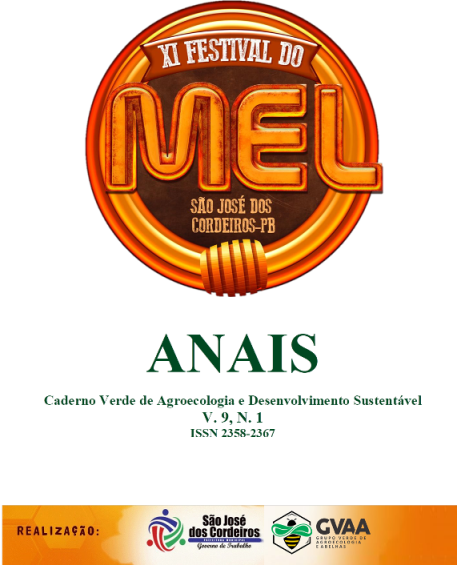QUALITY OF HONEYS SOLD IN THE CITY OF SOUSA, PARAIBA, BRAZIL
Keywords:
Lund, Lugol, Honey, Apis mellifera L.Abstract
Honey is considered a viscous, aromatic and sweet fluid elaborated by bees from nectar and/or sacanic plant exudates, mainly from floral origins, which, after being taken to the hive by the bees, are ripened by them and stored in the comb for their feeding. Honey comes from bees and some wasps, but due to its ancient domestication and originate from the main consuming countries, the bee Apis mellifera L. is the species considered to be the main producer of honey commonly used for human consumption. Honey is a concentrated solution of sugars with predominance of glucose and fructose. It also contains a complex blend of other carbohydrates, enzymes, amino acids, organic acids, minerals, aromatic substances, pollen pigments and grains may contain beeswax from the extraction process. The research aimed to evaluate the quality of honeys commercialized in the city of Sousa-Paraíba in relation to the physicochemical parameters. Three honey samples (A, B and C) were evaluated for humidity, water activity (Aa), free acidity, reducing sugars, sucrose, color, Lund and lugol reactions. The results presented humidity percentages of 20,00±1,22, 22,00±0,51 and 16,19±0,30 for samples A, B and C respectively. Already Aa incited humidity values of0,67±0,01, 0,67±0,02 and 0,62±0,003 and free acidity were found the values of 39,80±0,96, 63,19±3,04 and 35,56±1,39, reducing sugars obtained 54,09±1,62, 52,23±1,68 and 46,53±0,70, The values found for sucrose were 15,81±8,57, 6,53±2,02 and 17,91±3,42, in color, sample A had a lighter coloration compared to samples B and C, with sample B showing the darkest coloration. The Lund reaction obtained the values of 0,0±0,0, 0,25±0,07, 0,15±0,21, in the lugol reaction the result was negative for all samples. The evaluation showed that not all parameters are in compliance with the legislation and only samples A and C for humidity and acidity are in compliance, sample B for sucrose, and for color and lugol reaction all samples met the required requirements.Downloads
Published
How to Cite
Issue
Section
License
Termo de cessão de direitos autorias
Esta é uma revista de acesso livre, em que, utiliza o termo de cessão seguindo a lei nº 9.610/1998, que altera, atualiza e consolida a legislação sobre direitos autorais no Brasil.
O(s) autor(es) doravante designado(s) CEDENTE, por meio desta, publica a OBRA no Caderno Verde de Agroecologia e Desenvolvimento Sustentável, representada pelo Grupo Verde de Agroecologia e Abelhas (GVAA), estabelecida na Rua Vicente Alves da Silva, 101, Bairro Petrópolis, Cidade de Pombal, Paraíba, Brasil. Caixa Postal 54 CEP 58840-000 doravante designada CESSIONÁRIA, nas condições descritas a seguir:
O CEDENTE declara que é (são) autor(es) e titular(es) da propriedade dos direitos autorais da OBRA submetida.
O CEDENTE declara que a OBRA não infringe direitos autorais e/ou outros direitos de propriedade de terceiros, que a divulgação de imagens (caso as mesmas existam) foi autorizada e que assume integral responsabilidade moral e/ou patrimonial, pelo seu conteúdo, perante terceiros.
O CEDENTE mantêm os direitos autorais e concedem à revista o direito de divulgação da OBRA, com o trabalho simultaneamente licenciado sob a Licença Creative Commons do tipo atribuição CC-BY.
O CEDENTE têm autorização para distribuição não-exclusiva da versão do trabalho publicada nesta revista.
O CEDENTE têm permissão e são estimulados a publicar e distribuir seu trabalho online (ex.: em repositórios institucionais ou na sua página pessoal) a qualquer ponto antes ou durante o processo editorial, já que isso pode gerar alterações produtivas, bem como aumentar o impacto e a citação do trabalho publicado.








